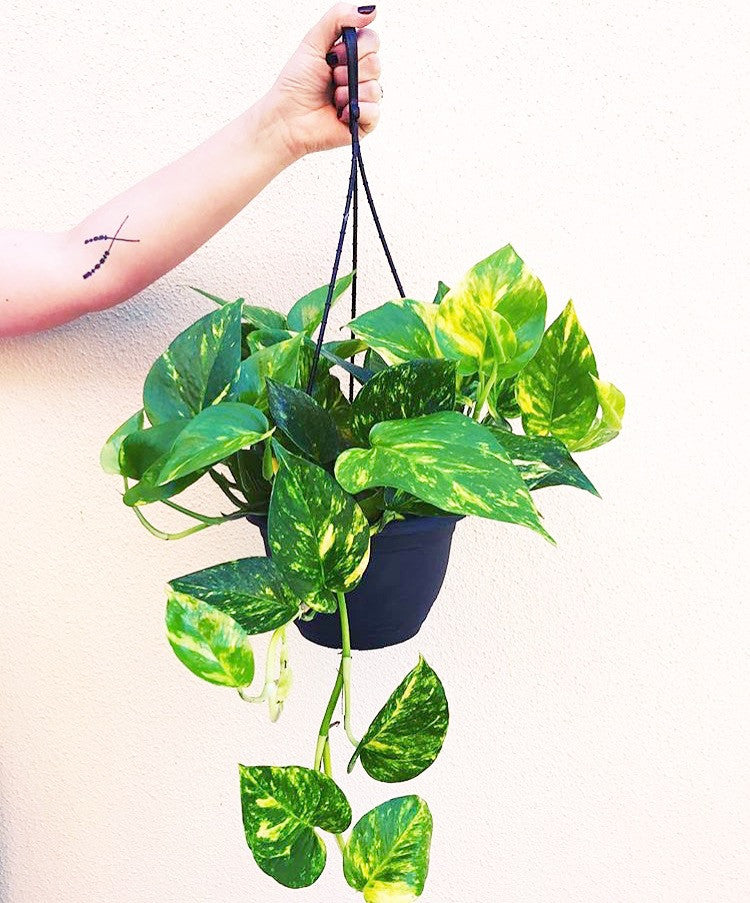
Plant Profile: Devil’s Ivy
Scientific Name: Epipremnum aureum
Common Names: Golden Pothos, Money Plant
Native to: Southeast Asia and the Solomon Islands
Devil’s Ivy is one of the most popular and versatile indoor plants thanks to its hardy nature and lush trailing vines. With heart-shaped leaves in vibrant green and golden variegation, it’s perfect for hanging baskets, trailing from shelves, or trained to climb. Easy to care for and forgiving of neglect, it’s a favourite for both beginners and seasoned plant lovers.
🌱 Care Instructions
-
Watering: Moderate – Water when the top few centimetres of soil are dry. Devil’s Ivy prefers slightly moist soil but will tolerate occasional drying out. Avoid overwatering.
-
Sunlight: Low to Moderate – Thrives in bright, indirect light but will adapt to low-light conditions. Variegation is strongest in brighter light. Avoid direct sun, which can burn leaves.
-
Growth: Quick – Fast-growing and trailing, it can reach several metres long. Trim regularly to encourage bushier growth and to keep it neat.
Extra Tips
-
Great air purifier — helps remove toxins from indoor air.
-
Easy to propagate by stem cuttings placed in water or soil.
-
Fertilise monthly in spring and summer to encourage vigorous growth.
-
Tolerant of a wide range of conditions, making it perfect for offices, living rooms, and bedrooms.
-
Toxic to pets if ingested, so keep away from cats and dogs.
Shop Our Indoor Plants
-
Regular price$45.00Regular priceSale price$45.00 Save $-45.00 (%)Unit priceper
Calathea Maui Queen
-
Regular price$45.00Regular priceSale price$45.00 Save $-45.00 (%)Unit priceper
Calathea Peacock
-
Regular price$45.00Regular priceSale price$45.00 Save $-45.00 (%)Unit priceper
Peace Lily
-
Regular price$55.00Regular priceSale price$55.00 Save $-55.00 (%)Unit priceper
Marble Queen








